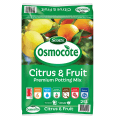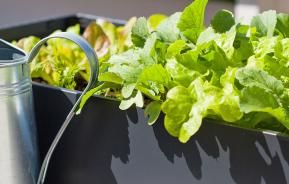Where you live in Australia will have a big impact on what you can grow.
Choosing plants for your climate is the easiest way to grow healthy trees, that readily produce an abundance of delicious fruit.
To help you choose the best fruit trees for your climate zone, let’s look at the five most common climatic zones in Australia:
- Cool
- Temperate
- Sub-tropical
- Tropical
- Arid
Growing for your climate zone
Plant breeding, grafting and careful selection have produced cultivars and varieties that will tolerate a wider range of climatic conditions than the original species fruits of old. However, some fruits just grow better in some areas then they do in others. To choose the right tree for your climate, follow these simple tips and tricks.
This may seem simple but until you start growing your own fruit and vegetables, the subtle climatic differences in your garden can be easily overlooked.
- Do you get frost?
- What are the lowest overnight temperatures?
- What’s the average humidity in summer?
All of these can have a big impact on what you can grow.
Once you know a little about your actual climate zone, you can then start to make informed decisions about what you will grow.
'Chill' is a term used to describe the suitability of many types of fruit trees to various climate zones. It relates to the required number of hours below 7 degrees C in order for the tree to set fruit.
- 'Low chill' varieties are best suited to warm temperate climates (including sub-tropics) as they will set fruit with as few as 150-200 hours a year below 7 degrees C.
- 'High chill' varieties need as many as 600 hours a year below 7 degrees C before they will set fruit. High chill varieties are only really suitable for the colder regions of Australia.
Now you know your climate zone and the terms used to describe various fruiting trees, click here for a brief glimpse into some of the plants that will grow well in your climate.
NOTE: The suggestions in the attached chart are just a guide. There will be many more fruit trees suitable for your climate zone. Check with your local nursery or garden centre for more suggestions.
If you are really desperate to grow something which may not be the perfect fit for your climate zone, try creating a suitable micro climate.
This is an area within your garden where you try to meet that specific plant’s needs.
For example, if you live in the tropics and you want to grow something that dislikes summer rainfall, then you’ll need to provide shelter from summer rains by building an awning or shelter.
Creating micro climates can be achieved in most regions, but it does require a little more work than simply choosing plants that grow well where you live.
Last but not least, if you are in any doubt as to what you can or cannot grow in your area, talk to local nurseries or garden centres.
They will be able to help you choose the most suitable plants for your climate, as well as offer advice on the best varieties for your garden based on available light, aspect and size.














